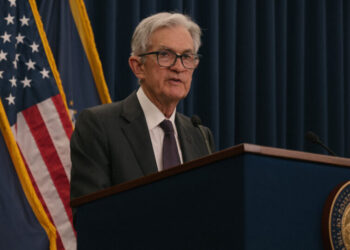Tens of thousands of lives could be saved if more people got screened for lung cancer, according to a new study.
Each year, lung cancer kills nearly 125,000 people in the United States — more than breast, colorectal and cervical cancers combined. The paper, published on Wednesday in the Journal of the American Medical Association, found that lung cancer screenings could prevent 62,000 deaths over a five-year period, or four times as many as are being saved today.
The screening itself is a straightforward CT scan that captures far more detail than an X-ray, said Priti Bandi, scientific director at the American Cancer Society who led the research.
Getting this yearly scan can help catch lung cancer in its early stages, when the five-year survival rate is 60 percent. But almost half of lung cancers are caught in their late stages, when patients have less than a 10 percent chance of surviving.
“The number of lives saved by early detection completely eclipses the lives we can save with drugs for advanced lung cancer,” said Dr. Douglas Wood, chair of surgery at University of Washington Medicine.
Why are screening rates so low?
To qualify for annual lung cancer screening, you must be 50 to 80 years old and have a significant smoking history, according to guidelines from the U.S. Preventive Services Task Force. That means you must have smoked cigarettes within the past 15 years and averaged a pack a day for at least 20 years — or an equivalent amount, like two packs a day for 10 years. (While radon and air pollution are other major causes of lung cancer, the guidelines do not currently take these hazards into account.)
About 70 to 80 percent of eligible Americans get mammograms, colonoscopies and Pap smears, but this study found that only 18 percent of eligible individuals receive lung cancer screening. “That’s abysmal,” said Dr. Mara Schonberg, a primary care physician at Beth Israel Deaconess Medical Center who researches cancer detection. The screening rates were lower among people in their 50s and healthier individuals.
Beyond saving tens of thousands of lives, if every eligible person were to get screened, the study estimated it would add about 14 years, on average, to the life of every person spared, Dr. Bandi said.
But it’s not always easy to get people tested. More than 60 percent of Americans don’t know that lung cancer screening is available. Many longtime smokers also assume they’ll be blamed if lung cancer is found, Dr. Wood said, and smoking is concentrated among low-income people, who already struggle to access care.
But one of the biggest obstacles may be simply figuring out who qualifies, said Dr. Drew Moghanaki, chief of thoracic oncology at UCLA Health.
Unlike other cancer screenings, where eligibility hinges only on age, lung cancer screening requires doctors to reconstruct people’s smoking history over decades. Some people might smoke different amounts at different times, or quit and restart. So, it’s time-consuming, if not impossible, for doctors to get an accurate smoking history, said Dr. Alison Rustagi, a primary care physician at the University of California, San Francisco, and strict eligibility cutoffs mean that being slightly off can disqualify someone.
“The lung cancer screening criteria is the most complicated of all screening criteria,” Dr. Moghanaki said. “It’s a mathematical rubric.”
Should the eligibility criteria be simplified?
Experts say that the current eligibility guidelines aim to capture those at the highest risk but don’t include about 50 percent of people who develop lung cancer.
So, this new study modeled the benefit of screening smokers who are not currently eligible — like those who quit more than 15 years ago or who smoked less than a pack a day for 20 years — and estimated another 30,000 lives could be saved. Screening people based on smoking duration, regardless of their quit date, could correct some biases in the current criteria and make it easier to assess eligibility, said Dr. Michael Gieske, a primary care physician at St. Elizabeth’s Healthcare in Kentucky.
Other experts urge more caution. The study didn’t account for the risks of lung cancer screening, such as false positives, anxiety and unnecessary tests, Dr. Schonberg said. These risks are immediate, but the benefits may not appear for years, if at all, she added.
The estimate of 62,000 lives saved also depends on assumptions that may not hold up in the real world. To make that calculation, the researchers presumed that participants got three CT scans and that screening cuts lung cancer deaths by 20 percent, based on a 2011 trial. But screening technology, follow-up protocols and tumor management have changed since then. So that number could be considerably different today, Dr. Rustagi said.
Yet even with these uncertainties, this study emphasizes how the United States is leaving one of its most powerful tools against cancer deaths on the table, Dr. Moghanaki said.
“This study shows just how big an opportunity we have to avert deaths and save lives,” he added.
Simar Bajaj covers health and wellness.
The post Screenings Could Save Four Times as Many People From Lung Cancer appeared first on New York Times.




